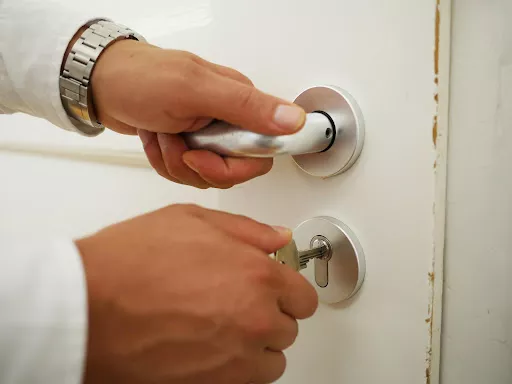 Add My Company
Add My Company
How to drill out a lock - Complete Guide

A lock is an absolute necessity when it comes to protecting your home and valuables stored in cabinets or storage areas. Unfortunately, locks might malfunction due to various factors, including physical damage to the lock or a damaged key lodged deep within its mechanism. If you hire a skilled locksmith, you won't have to worry about harming the door when you take out the cylinder. However, you may also unlock it without hiring a locksmith. You can drill the broken lock yourself and likely save a bit of money. You will just need the appropriate tools and skills to accomplish this project. How to drill out a barrel lock? If you've misplaced your key and need to get into a locked barrel or cylinder, the quickest way to get in is to drill them. This task can be completed with a power drill and either a cobalt or carbide drill bit, as well as a hammer, punch, and screwdriver. After that, all you have to do is follow the steps discussed in this article to complete the process. Steps to drilling out a lock: First, ensure you have all of the necessary tools before drilling out a cylinder lock or a barrel lock such as the ones mentioned above. In addition, always wear safety equipment such as goggles to avoid metal shards from harming your eyes. Position the punch near the top of the lock, slightly below the dividing line between the outer and inner locks. Make an indentation on the lock by striking the punch with a hammer two or three times to make a guide point. Begin drilling using the 3mm drill bit, drill a hole through the lock cylinder on the guidance point. Your objective is to destroy the pins inside the lock to open the lock. Reverse the drill and remove it from the lock if it becomes stuck while drilling. Hold the drill gently, and it is essential to keep the drill steady and avoid excessive speed or pressure. Using oil to lubricate the drill head will make drilling easier. Maintain constant pressure while keeping the drill level. Once a small hole is drilled, change to a 6mm bit or larger drill bit. Drill the lock again with the larger bit to further break up the pins. Insert the flat-headed screwdriver into the lock. As you would with a key, use the screwdriver to turn the lock. The lock should turn if you drilled correctly. Suppose it does not turn, re-drill, and ensure that you have drilled through all the pins. You may need to destroy the entire lock cylinder If the lock does not open. Some locks may be more difficult, so drilling through the whole lock assembly may be required in some cases. Change to a larger 19 inch drill bit and drill through the entire locking mechanism. How does a cylinder lock work? The locking mechanism is housed in the cylinder. When a key is inserted into the cylinder, its ridges come into contact with the spring-loaded pins. Cylinders are spring-loaded and equipped with a series of pins that will not rotate until the correct key is pushed in the right direction and pattern. When all of the pins are correctly aligned, the cylinder will turn and move the bolt allowing the door to open. However, a broken lock or missing key will prevent pins from lining up inside the lock. To open the lock, these pins must be destroyed using your drill bit. How to drill out a storage cylinder lock Storage doors usually have cylinder locks. You may become locked out occasionally owing to misplaced keys or damaged locks, in which case your only choice is to drill them open. You only need to follow the same steps discussed above to drill out the lock. Because they resemble and operate similarly to the locks on the front door of your home or apartment, they require the same maintenance as regular cylinder locks. In addition, cylinder locks provide greater security than padlocks since they do not protrude from the unit door in the manner that a padlock does. Best drill bits for drilling out locks Although locks have a soft metal exterior, their internal components are frequently constructed of hardened steel. So it is critical to utilize a robust and sturdy drill bit. The best drill bits for drilling locks are either tungsten carbide-tipped drill bits or cobalt drill bits. Tungsten drill bits can be used to drill lock components made from bronze alloys, cast iron, alloyed steel, and hardened steel. However, cobalt drill bits are frequently used to cut through very abrasive and tough materials. Cobalt bits are specifically developed for drilling into steel. Additionally, they can cut through the toughest metals, such as cast iron, stainless steel, and titanium. Should you hire a locksmith or do it yourself? A locksmith should never have to drill into a lock unless absolutely necessary. It is essential to note that you must give consent to this procedure before it can take place. Before attempting to drill a lock, all other methods should be considered, like picking or bumping. If they fail, then drilling a lock is the only option left open. You can choose to do it yourself, however, It is a good idea to find out how much it will cost to replace the lock before starting on your project. Finally, finding a suitable replacement lock is critical, so feel free to explore all the different options on our website if you do go ahead with drilling out your lock.
For more information on How to drill out a lock - Complete Guide talk to Acorn Ironmongery Ltd
